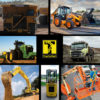CONSTRUCTION WORKERS AT HIGHEST RISK FOR TRAUMATIC BRAIN INJURIES

Construction workers sustain more traumatic brain injuries (TBI) than employees at any other type of workplace in the United States, according to a recent report from NIOSH.
In a report published in the NIOSH Science Blog, Srinivas Konda discusses the findings of researchers at the National Institute for Occupational Safety and Health (NIOSH) who took a close look at deaths due to TBIs in the construction industry in the United States during 2003 to 2010. The 2016 report, published in the American Journal of Industrial Medicine, shows these startling statistics:
- From 2003 to 2010, 2,210 construction workers died because of a TBI. These deaths represented 25 percent of all construction fatalities and 24 percent of all occupational TBI fatalities during the same period.
- Workers in small construction companies (less than 20 employees) were more than 2.5 times more likely than those in larger companies (greater than100 employees) to die from a TBI.
- Males were 7 times more likely than females to die from a TBI.
- Older workers (greater than 65 years) were almost 4 times more likely than younger workers (25–34 years) to have a fatal TBI.
- The TBI fatality rate was significantly higher for foreign-born than for native-born workers.
- Falls, especially from roofs, ladders, and scaffolds, led to more than 50 percent of fatal work-related TBIs.
- Structural iron and steel workers and roofers had the highest fatal TBI rate, and TBIs related to falls caused most of their deaths.
How do employers protect workers from fall-related TBIs?
A nationwide construction falls-prevention campaign, started by NIOSH, OSHA, and the CPWR—The Center for Construction Research and Training, seeks to raise awareness by encouraging everyone in construction to work safely and use the right safety equipment while working at heights, such as on roofs, ladders, and scaffolds. The Safety Stand-Down, stemming from the campaign, will occur during May 2-6, 2016. The Safety Stand-Down site provides training resources in English and Spanish, webinars, and sample event schedules to help contractors refresh their workers’ fall prevention skills.
Source: CDC.gov












